Born in Tokyo, Yuri Suzuki has approached the world of sound in an entirely novel way. Initially trained as an industrial designer, he fell in love with sound in its physical form through his work on the Otamatone, one of Japan’s best-selling musical instruments.
He’s worn many hats since then, ranging from working with Yamaha on musical experiences to founding his own sound and design consultancy. He launched the OTOTO, a DIY synthesizer, on Kickstarter, which allowed players to use an all-in-one musical invention kit to make anything into an instrument. It is currently part of the Museum of Modern Art’s permanent collection.
Now a partner at Pentagram, Yuri spoke to us about working on sound and design projects, seeing Alexander Calder for the first time, and what it’s like to build sculptures based on sound.

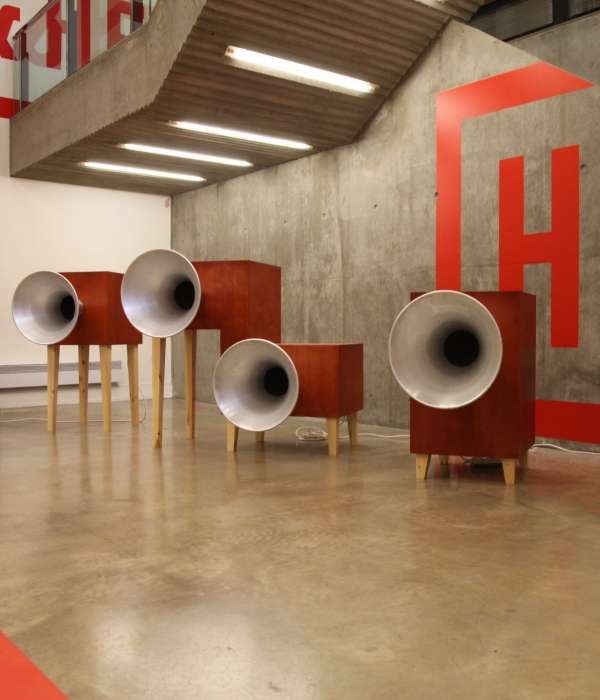
You have a unique perspective on creating new experiences for people. Could you walk me through how you ended up in this space?
It’s hard to describe. Music and sound were my initial interests, and at first, I tried to be a musician. I was greatly influenced by my dad and his huge record collection as well. But I couldn’t read a musical score, so I decided not to be a musician. Even still, sound and music have been instrumental in my creative practice for a long time.
I decided to explore these ideas during my studies at the Royal College of Art in London. I was considering how to use my previous music knowledge to make something physical, either as a product or as sound installations. So that’s how my practice started.
Were there other creators that inspired you to combine your diverse interests?
Totally. There are so many artists and designers who influenced me a lot. I used to work for a Japanese art unit called Maywa Denki. They are really brilliant. They also make a lot of mechanical musical instruments, and they do art installations in addition to their performance and product design. That’s what I’m doing at the moment. I’m crossing different media and they are a multi-disciplinary platform. So I have drawn a lot of influence from them.
In terms of individual artists, Christian Marclay has always been my biggest influence. He expresses himself in terms of his central materials—sound and music—but he uses completely different formats, including elements from his cultural background, sculpture, and other visual media. It was very, very interesting for me to view his work and consider how to physicalize sound.
In terms of kinetic aspects, Alexander Calder’s “Cirque Calder” is a huge influence. It’s a beautiful mixture of amazing kinetic ideas. In fact, when I was very small, my parents took me to New York and I saw the whole “Cirque Calder” at the Whitney Museum. That had a really big impact on me.
A lot of times, we use the term “toy” in a derogative sort of way. A toy is something you don’t take seriously. Yet it seems like a lot of the things you create are playable. Do you think that we should take what we previously called “toys” more seriously?
Yes. Because I am dyslexic, I’m not really good at reading or writing. So to me, the best method for making things understandable is actually using interaction design. Often people feel like my work looks like a toy, which makes sense because that is often my intention in presenting it. My early work actually consisted of trying to make things that looked like industrial, toy-like objects. But everything was handmade because I didn’t have any knowledge of production in China at that time.
I used to show my work in gallery spaces and museums a lot, presenting it as art or installation. But recently I did a project called OTOTO, which is actually a mass-production piece. We did a Kickstarter campaign for it that garnered some investment. That led me to be interested in a different way of interacting with users or visitors.
Where I am from in Japan, there are experimental toys. For example, the “Furby” actually demonstrates early machine learning, so it can be considered an experimental and conceptual object as well. A toy can be a format to experiment or a new means of communicating with people in a much deeper way.
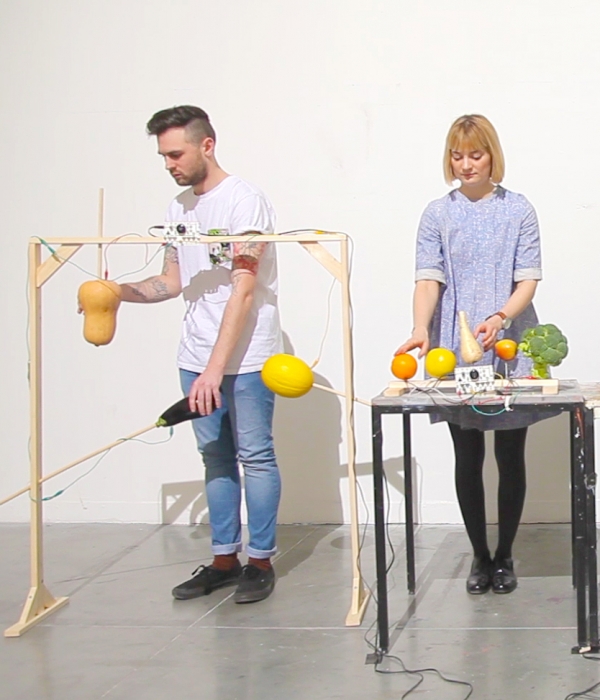
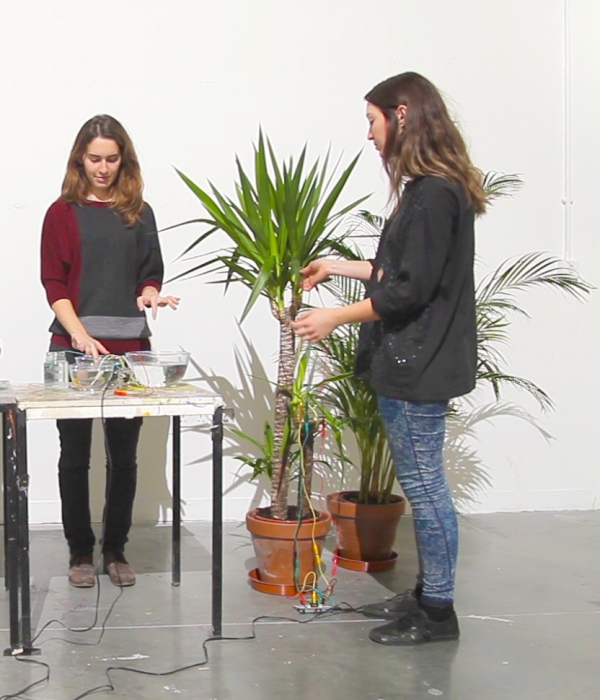
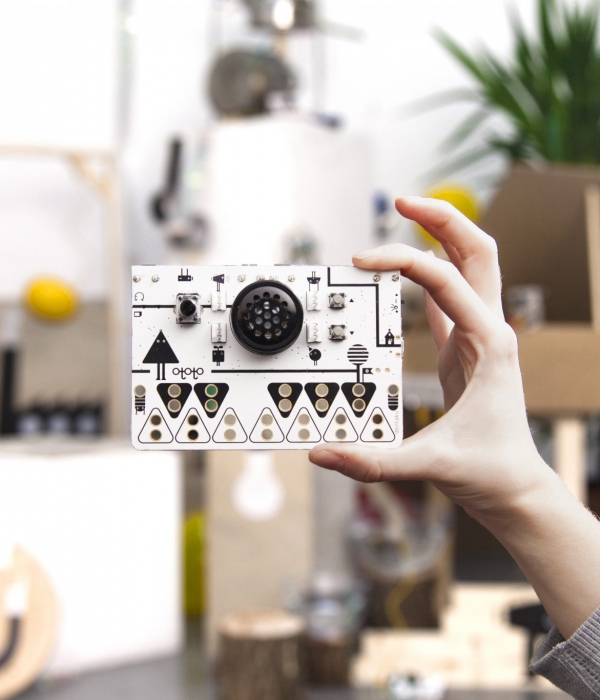

As a creator, how do you design things that can be experienced in a variety of different ways?
I try to leave space for people to finish. I design or create a series of objects that leaves a lot of space for the user or some people to make another creation.
For example, OTOTO is actually just a keyboard, but if you like programming and making productive objects, you can use it to create your own musical instruments. Another project I made asked people to draw a picture and the picture becomes music as well. I’m interested in how people help others to create another creation. That’s why my projects have so much space to play with.
With OTOTO, anyone can create their own musical instruments, but every sound and space is a little different. Could you tell me a little bit about the design of OTOTO? What creative need did you want it to fulfill for people who use it?
In the beginning, the design came out of my time working for a company called Teenage Engineering. I absolutely enjoyed working for them. During that time, I worked on a project for them called the OP-Lab, which is a pretty niche product. It’s like a data exchange board for complex musical signals. But my task for that project was to try to make it as friendly as possible since many people who don’t have musical knowledge couldn’t use it.
Basically, I didn’t have much programming or physical computing knowledge at all. I’d always wanted to make a musical instrument installation or a tool like the OP-Lab, but I couldn’t do it because I didn’t have any programming knowledge. That’s why I came up with OTOTO, because it doesn’t require any prior knowledge. You don’t need to connect it with a computer or anything. For me, it’s attractive — creating my dream for people like me.
How does the shape or design of an object influence how it sounds or how people approach it? For example, I love Teenage Engineering’s designs. There’s a levity to them and the objects themselves are wide and colorful. They have animations inside of them, but they’re also for music-makers, and are obviously very serious creative tools. I’m curious—how does the design of a sound object influence people’s expectations of what they can make with it?
Combining both the visual and practical aspects of an object can make it much more efficient and allow it to have a stronger impact on people, especially as a creative tool. In a way, I tried to do what Jesper Kouthoofd [CEO of Teenage Engineering] does—design visual aspects that are impactful, clear, and understandable while also being beautiful or cute. Additionally, the auditory experience can actually help explain the use of an object much better.
Part of it, for me, is that the things you create aren’t just touchable but also collaborative. In other spaces, if you want to play music with other people, everyone needs to be at a comparable skill level and needs to know their individual instrument. But with your objects, anyone can walk into the space and immediately start making things.
You trained as a musician and obviously have a high degree of ability in terms of creating music on your own, and yet you make these tools that allow anybody to make something special. Why did you find your work moving in that collaborative direction?
First of all, in terms of making music, it is fun to jam with other people. When each person has a different sound and a different input, the collaborative experience can produce things that are quite interesting.
At the same time, my installations are easy to touch and easy to use for making music. I try to replicate the same sensation I felt when I first used a drum machine. Drum machines have a function called “quantization” that automatically makes the timing of beats more precise, which is pretty amazing because even if you don’t play very well, the computer will adjust your performance and in the end this “perfect” music comes out.
So I want my work to have both aspects: the collaborative spirit of a jamming session as well as an approachable experience that can result in a piece of music even if you interact with it randomly. I’m always thinking of these two aspects.

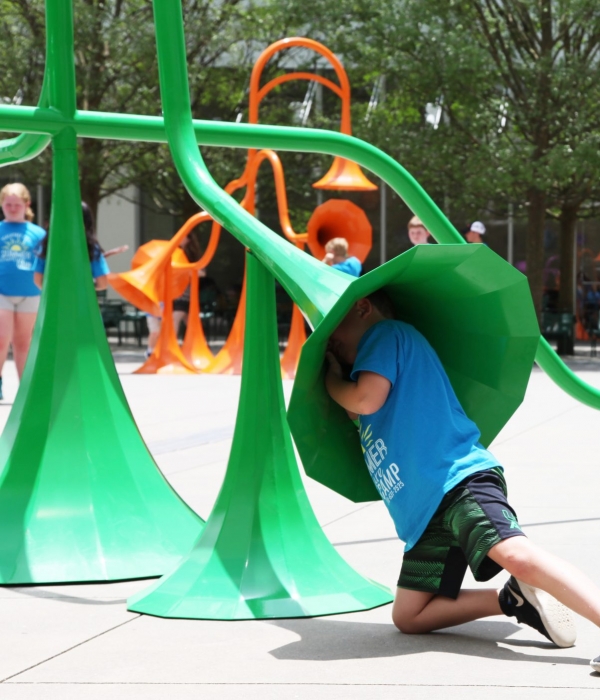
How has your work evolved as a creator over the last two decades?
In the beginning, I used primitive technology and methods to make the things I fantasized about. That was my starting point.
It has been quite exciting these past 10 years because I’ve made my own studio. My team might be doing some testing on client work or on more complex projects, but meanwhile, I might not know how their method works. The publication, programming, mechanical fabrication, mechanical design—everything has left my hands now. Sometimes even as I look at my recent work, there’s no way I can make it by myself and no way I can fix it myself.
This kind of feeling is scary now because this is my work, but at the same time, it’s outside my knowledge base. The concept is mine; I make the whole concept and design. But the technology and structure are incredibly complicated now compared to what I was doing. It’s fascinating. It’s great. I love it. I am working with new technology, such as artificial intelligence, that used to be outside of my capabilities.
What are you working on next? What’s the next thing that you are excited about?
We have a big installation coming this summer. We are creating seas of acoustic sculptures for a museum called High Museum of Art. They commissioned us to do a public sculpture installation, which is actually quite complicated, so we are working with acoustic engineers. It’s like a playground and is all about playing with sound. Through the sound sculpture, your voice is being translated into a different format. It should be quite an interesting project, but at the same time a quite hard one as well.










